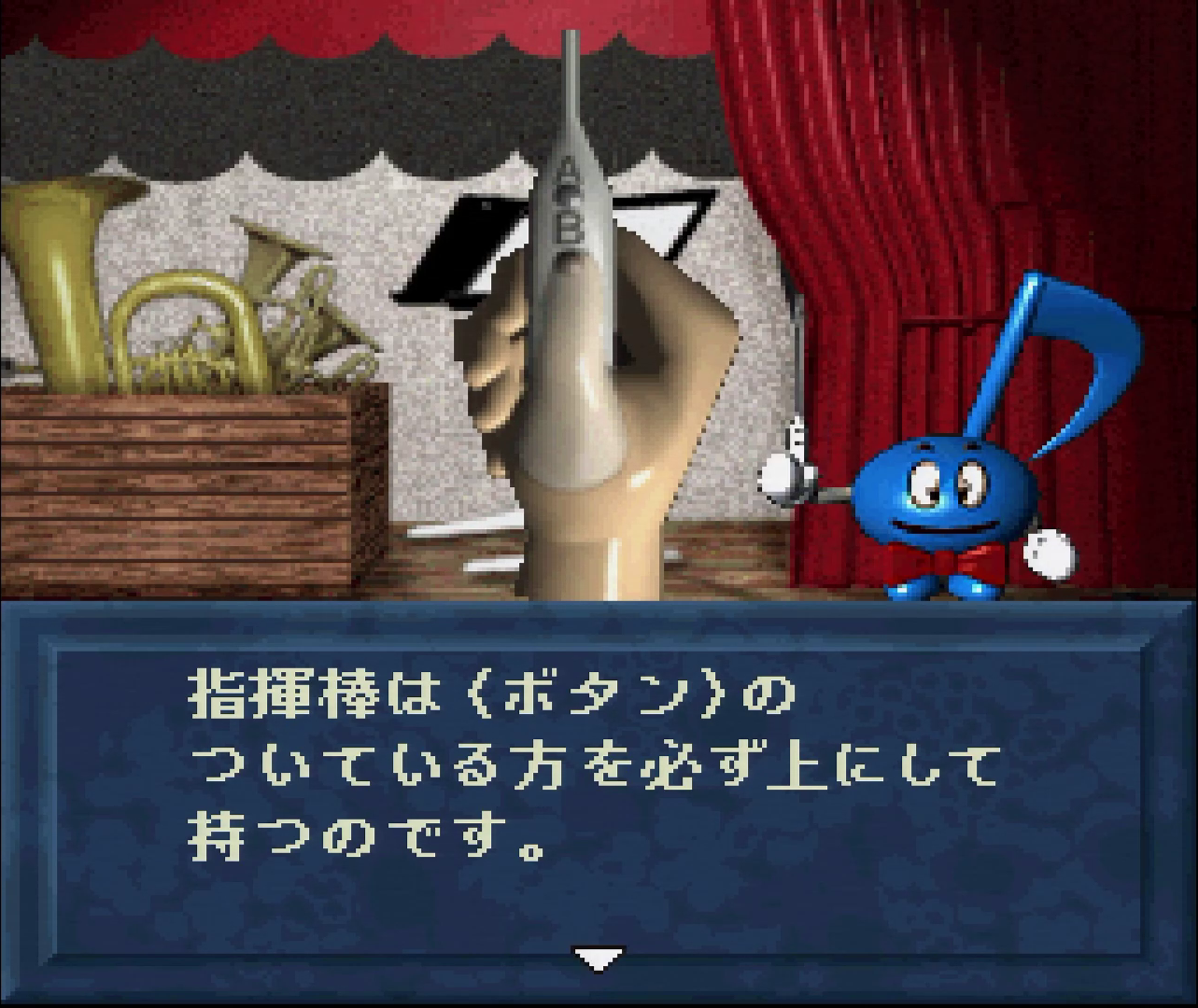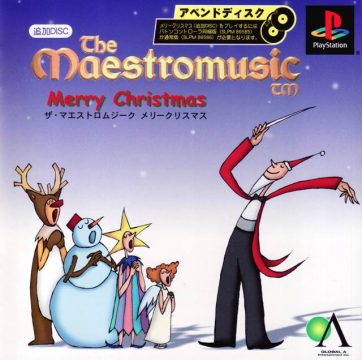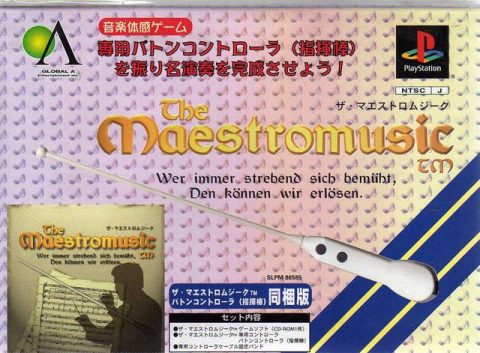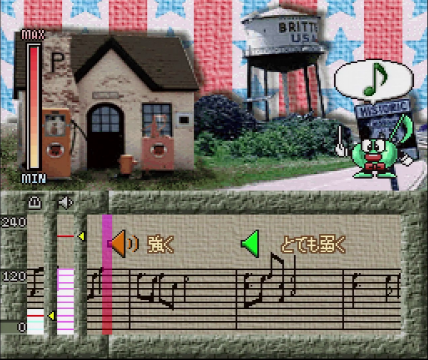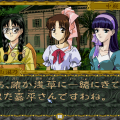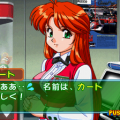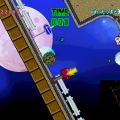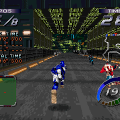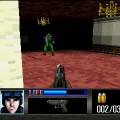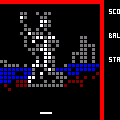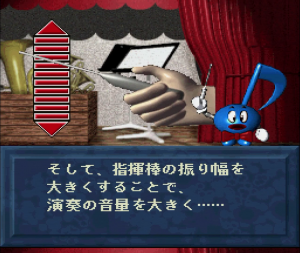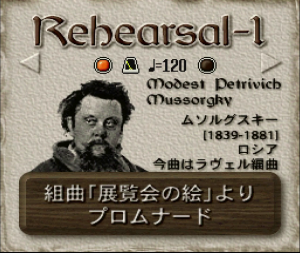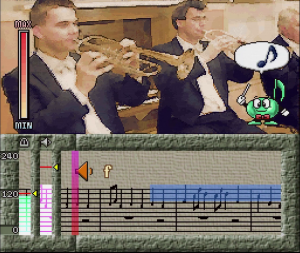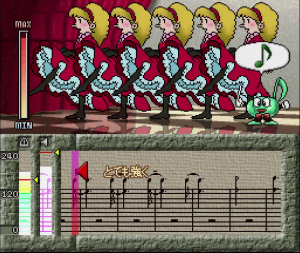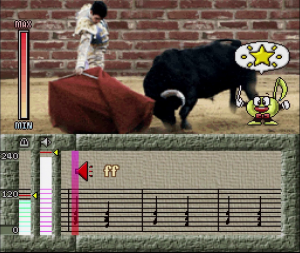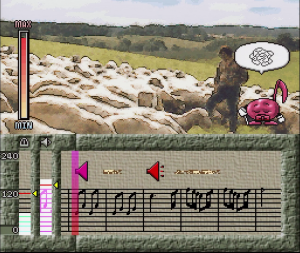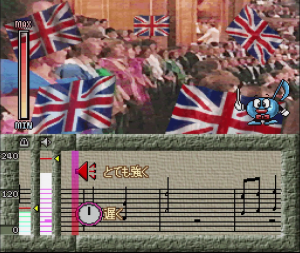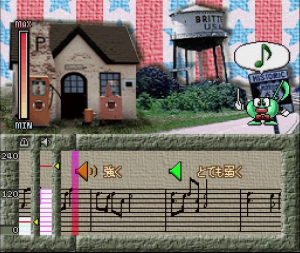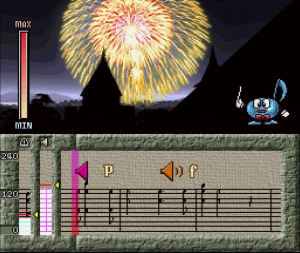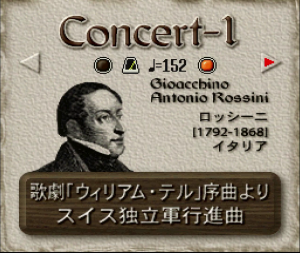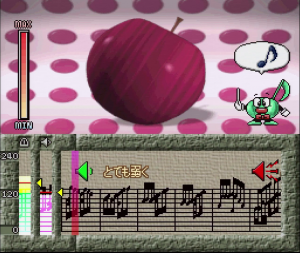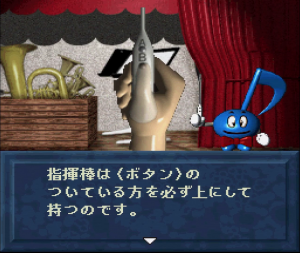The Maestromusic (ザ・マエストロムジーク)
Developer: Global A
Release Date: 2000
Platforms: PlayStation
This article is part of our Japanese Obscurities feature. We put out a whole book about them, which is available as both a full color hardcover and a Kindle ebook from Amazon! If you’d like to see more of these features, please check out the book and if you enjoyed it, leave a five star review so we can do a follow up with even more interesting, offbeat, or historically important Japanese games!
The PlayStation is known for having creative peripherals, but The Maestromusic might have one of the strangest controllers on the entire platform. Though it can be played with a Dualshock, The Maestromusic was packaged with a conductor baton controller. It features “A” and “B” buttons, but the controller is primarily used by waving it vertically. Not only does this feel like a coincidental test run for the Wii remote’s waggle capabilities, it also works well and makes for a properly unique experience.
When playing a song, your primary concerns are maintaining the proper tempo and volume as you conduct. Tempo is tracked based on how quickly you move the baton in between notes and volume is determined by how hard you swing. If blue bars appear, you’re meant to tap the B button as a form of providing specific directions to the ensemble. Each time you wave the baton, the timeline of the song proceeds and depending on how close you are to the game’s expectations, you’ll either gain or lose points. Learning how to swing with the right strength while maintaining a consistent tempo takes practice, especially with faster songs, but the game is very lenient with how it calculates points, making most songs quite easy to clear.
The game is divided into “Rehearsal” and “Concert” modes, both of which make you play three songs before the credits roll. Some of the famous composers featured include Beethoven, Modest Mussorgky, Georges Bizet, Edward Elgar, and Antonin Dvořák. Every song features unique visuals in the background, oftentimes including painterly visuals or low-res static images that are rather endearing nowadays. Any songs you complete can be replayed in Free Mode and you’ll have to play each mode multiple times in order to try them all. You can also go into Free Mode to learn more about the composers featured in the game. The Maestromusic’s track list is slim at 12 songs, but earning S ranks on every song is a demanding enough challenge if desired.
A few months after the game’s release, an Encore Disc and Merry Christmas Append Disc were released, providing more songs to play. The former is more of the same, but the latter adds seven Christmas-themed songs and even a couple of minigames that can be played with the baton. A sequel was released on the PS2 in 2001 and is also more of the same, though it does take advantage of the newer hardware with a flashier and entirely different UI.
